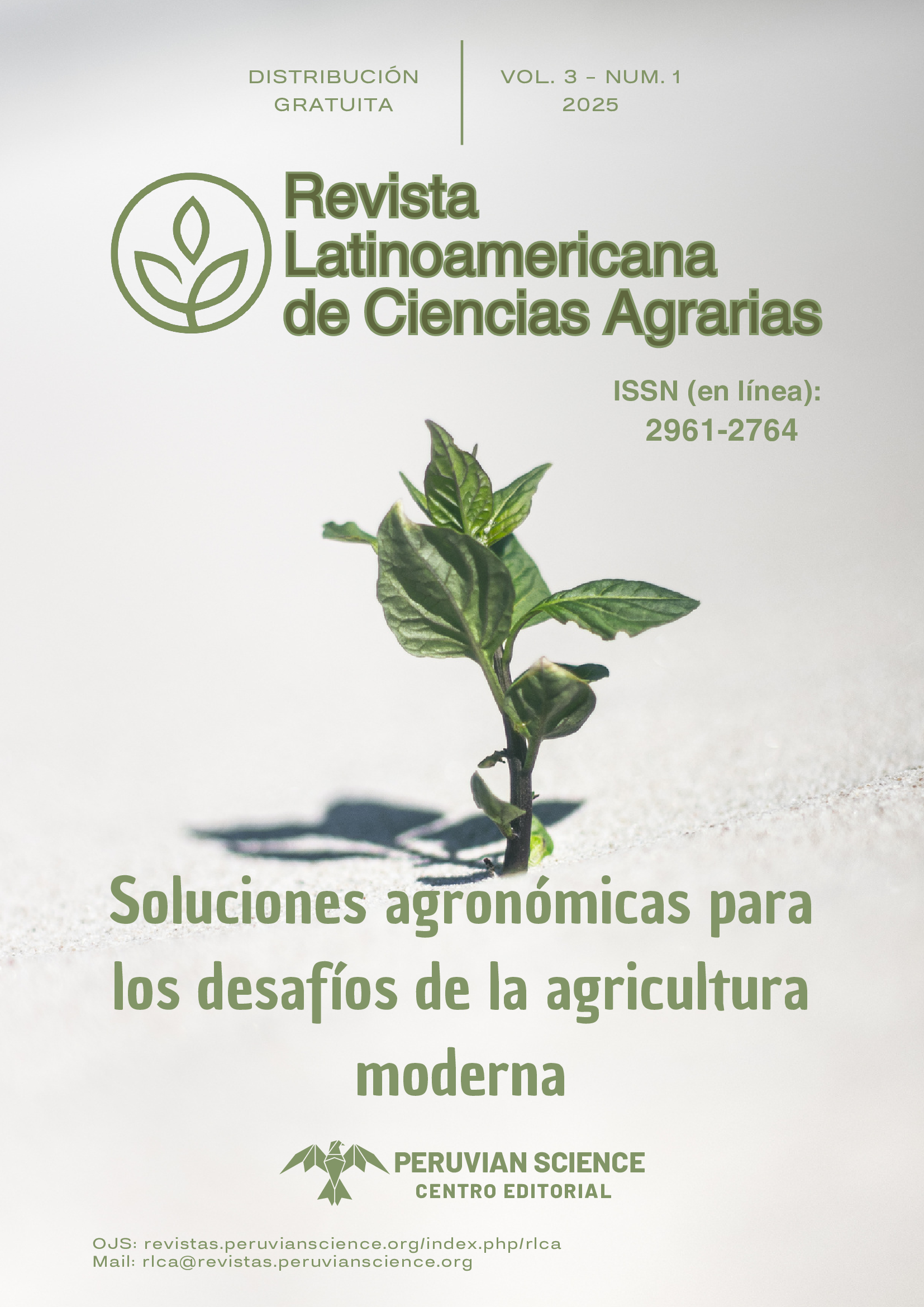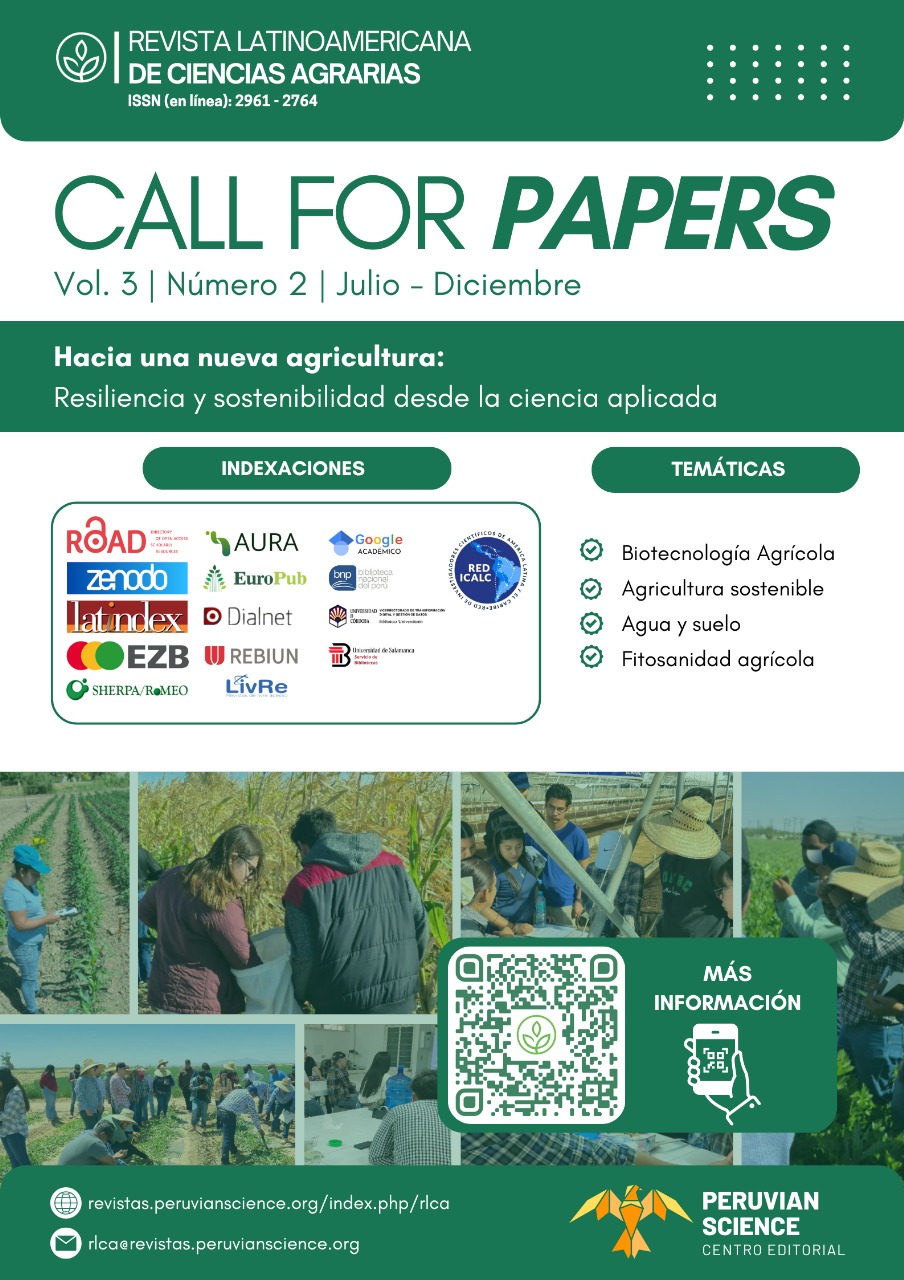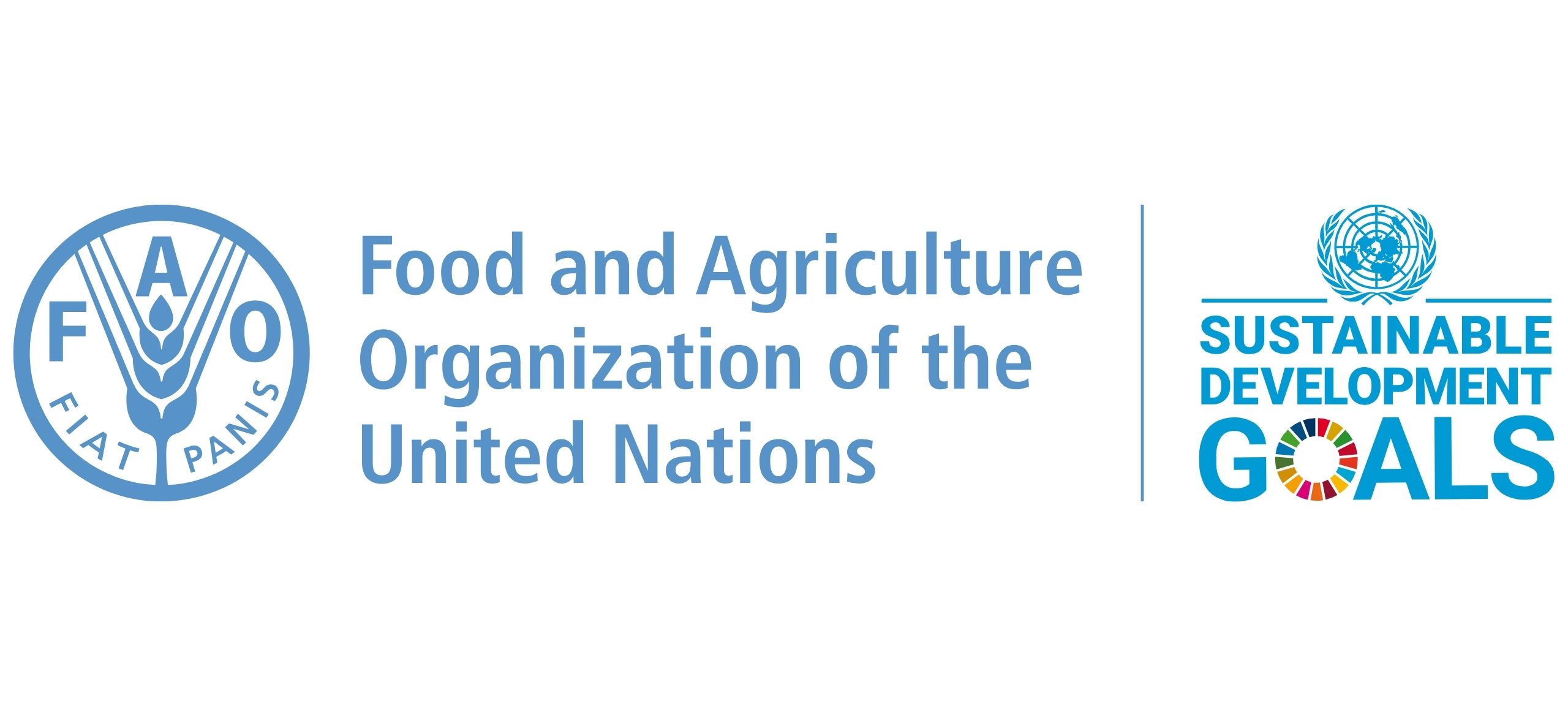Effect of a biopreparation with efficient microorganisms on the cultivation of Vigna unguiculata L.
Keywords:
fertility; agricultural productivity; soilAbstract
This research evaluated the effect of a biopreparation with efficient microorganisms on the cultivation of Vigna unguiculata L. in Cruces, Cuba, where soil degradation affects productivity. The study was conducted at the "La Caoba" farm using a randomized block design with three treatments (control, 7 L ha⁻¹, and 10 L ha⁻¹ of EM) and four replicates. Morphological variables (height, number of flowers and pods) and yield were analyzed using standardized agronomic techniques and statistical analysis (ANOVA and Tukey). The 10 L ha⁻¹ dose showed significant increases compared to the control: 23 % in height, 90 % in flowers, 73 % in pods, and 79 % in yield. These results confirm that biopreparation improves crop development and soil fertility, being a sustainable alternative for degraded soils. The study demonstrates the technical feasibility of MEs under local conditions, although its long-term impact and evaluation of other crops is recommended. This research provides practical solutions for areas with soil constraints, promoting sustainable agricultural practices.
Downloads
References
Calero, A., Pérez, Y., Peña, K., Olivera, D., Jiménez, J., & Carabeo, A. (2023). Coinoculación de biofertilizantes microbianos en pepino y habichuela y su efecto en el crecimiento y rendimiento. Dialnet. https://dialnet.unirioja.es/descarga/articulo/9422265.pdf
Carrillo, Y., Terry, E., Ruiz, J., & Delgado, G. (2022). Efecto de la coinoculación de microorganismos eficientes-HMA en el rendimiento del cultivo del tomate (Solanum lycopersicum L.). Cultivos Tropicales, 43(2). http://ediciones.inca.edu.cu/index.php/ediciones/article/view/1654
Estados Unidos. Organización de las Naciones Unidas para la Alimentación y la Agricultura (FAO). (2024). Definiciones. Portal de Suelos de la FAO. https://www.fao.org/soils-portal/about/definiciones/es/
García, R., Martínez, L., & Sánchez, I. (2021). Microbial biostimulants enhance seed germination uniformity. Journal of Plant Growth Regulation, 40(3), 245–256. https://doi.org/10.1007/s00344-021-10334-1
Gómez, A., & Ramírez, J. (2020). Sinergia entre biopreparados a base de microorganismos eficientes y fertilización orgánica en el cultivo de habichuelas. Revista Internacional de Agricultura Sostenible, 15(2), 45-58. https://www.redalyc.org/journal/1932/193279250003/193279250003.pdf
Gómez, L., García, C., Martínez, F., & Aguilar, Y. (2017). Manejo Sostenible de suelos en la Agricultura. Revista Agroecología. 12(1), 25-38. https://revistas.um.es/agroecologia/article/download/330321/229281/1125381
Hernández, A., Pérez, M., Bosch, D., & Speck, C. (2015). La clasificación de suelos de Cuba: Énfasis en la versión de 2015. Scielo 40(1), 1-93. http://scielo.sld.cu/pdf/ctr/v40n1/1819-4087-ctr-40-01-e15.pdf
Hernández, M., López, P., & Martínez, R. (2021). Impacto de biopreparados microbianos en la inducción floral de Phaseolus vulgaris L. Journal of Sustainable Agriculture and Biotechnology, 8(3), 112-125. https://dialnet.unirioja.es/descarga/articulo/9422265.pdf
Instituto Cubano de Investigaciones de los Derivados de la Caña & de Azúcar (ICIDCA). (2019). Microorganismos eficientes: Producción y aplicación en la agricultura, postcosecha y cría de animales. https://www.g77.org/pgtf/finalrpt/INT-17-K13-FinalReport.pdf
Instituto Cubano de Investigaciones de los Derivados de la Caña de Azúcar [ICIDCA]. (2019). Protocolos para bioensayos con derivados de caña de azúcar. La Habana, Cuba. https://www.revista.icidca.azcuba.cu/wp-content/uploads/2020/11/Vol.-53-No.-3-2019.pdf
Liu, Y., Chen, H., & Wang, Z. (2023). Micronutrient-enhanced biostimulants improve pod length and quality in legumes. Crop Science, 63(2), 890-901. https://doi.org/10.1002/csc2.20876
López, J., Baldaquín, A., & Labrada, M. (2021). Predicción del rendimiento agrícola en el cultivo de la habichuela. AmeliCA. https://portal.amelica.org/ameli/journal/576/5764724011/html/
Martínez, F., García, C., Gómez, L., & Aguilar, Y. (2017). Manejo Sostenible de suelos en la Agricultura. Revista Agroecología. 12(1), 25-38. https://revistas.um.es/agroecologia/article/download/330321/229281/1125381
Martínez, R., López, P., & Hernández, M. (2021). Impacto de biopreparados microbianos en la inducción floral de Phaseolus vulgaris L. Journal of Sustainable Agriculture and Biotechnology, 8(3), 112-125. https://dialnet.unirioja.es/descarga/articulo/9422265.pdf
Matos, K. (2023). Guía del cultivo Habichuela. (DIGUERA) Dirección General de Riesgos Agropecuarios. https://digera.gob.do/wp-content/uploads/2023/12/Guia-de-Cultivo-Habichuela.pdf
Pérez, Y., Calero, A., Peña, K., Olivera, D., Jiménez, J., & Carabeo, A. (2023). Coinoculación de biofertilizantes microbianos en pepino y habichuela y su efecto en el crecimiento y rendimiento. Dialnet. https://dialnet.unirioja.es/descarga/articulo/9422265.pdf
Ramírez, J. (2018). Efecto del bioestimulante orgánico biol en el rendimiento del frijol variedad canario 2000. Revista Científica Agroecosistemas, 8(2), 110-115. https://aes.ucf.edu.cu/index.php/aes/issue/view/13
Ramos, M., & Terry, M. (2014). Manejo sostenible de suelos agrícolas: uso de abonos orgánicos y biofertilizantes. Editorial Científica Cubana. http://scielo.sld.cu/scielo.php?script=sci_arttext&pid=S0258-59362014000400007
Reyes, F. (2020). Modelo para la predicción del rendimiento de grano en maíz (Trabajo de tesis, Colegio de Postgraduados). http://colposdigital.colpos.mx:8080/jspui/bitstream/10521/4309/1/Reyes_Gonzalez_F_MC_Edafologia_2020.pdf
Torres, F., Pérez, C., & Sánchez, L. (2022). Optimización de dosis de microorganismos eficientes para mitigar estrés hídrico en habichuelas. Agroecology Research Journal, 12(4), 78-92. https://ediciones.inca.edu.cu/index.php/ediciones/article/view/1737
Valdivies, Y., Quintana, L., Martínez, A., & Carrazana, Y. (2023). Propiedades físicas y componentes de la fertilidad del suelo en la Finca Maripa, Cumanayagua, Cienfuegos. Revista Científica Agroecosistemas, 11(2), 2. https://aes.ucf.edu.cu/index.php/aes/article/view/634/602
Wang, L., Zhang, X., & Li, J. (2022). Effects of amino acid-based biostimulants on bean pod length and yield. Agronomy Journal, 114(3), 1234-1245. https://doi.org/10.1002/agj2.20456
Downloads
Published
How to Cite
Issue
Section
License
Copyright (c) 2025 Latin American Journal of Agricultural Sciences - RLCA

This work is licensed under a Creative Commons Attribution-NonCommercial-NoDerivatives 4.0 International License.
The Latin American Journal of Agricultural Sciences (ISSN online: 2961-2764) applies the Creative Commons Attribution (CC BY) license to the articles and other works we publish. Therefore, each manuscript submitted for publication by the journal will be processed under the CC BY license. This means that the manuscript author retains copyright to their published documents while agreeing that their article may be reused in whole or in part by anyone for any purpose, free of charge, including for commercial purposes. The use of this license is consistent with the open access policy of the journal, since this is the most open license considered "the gold standard" of open access.






















